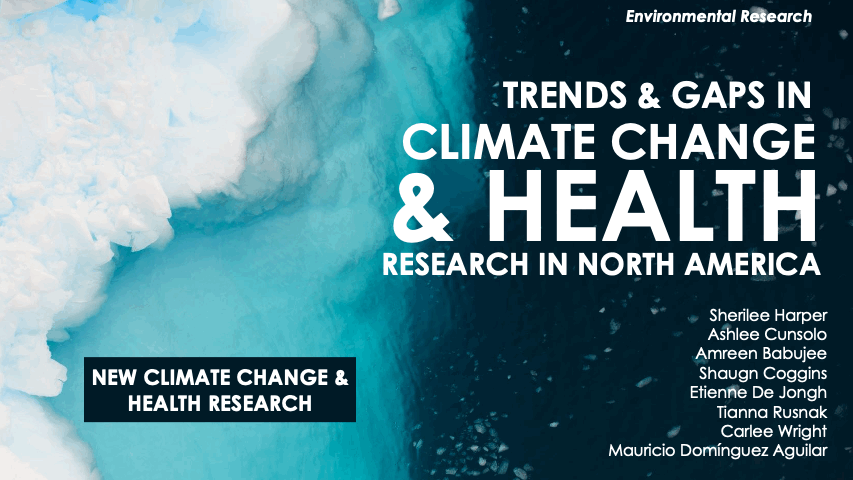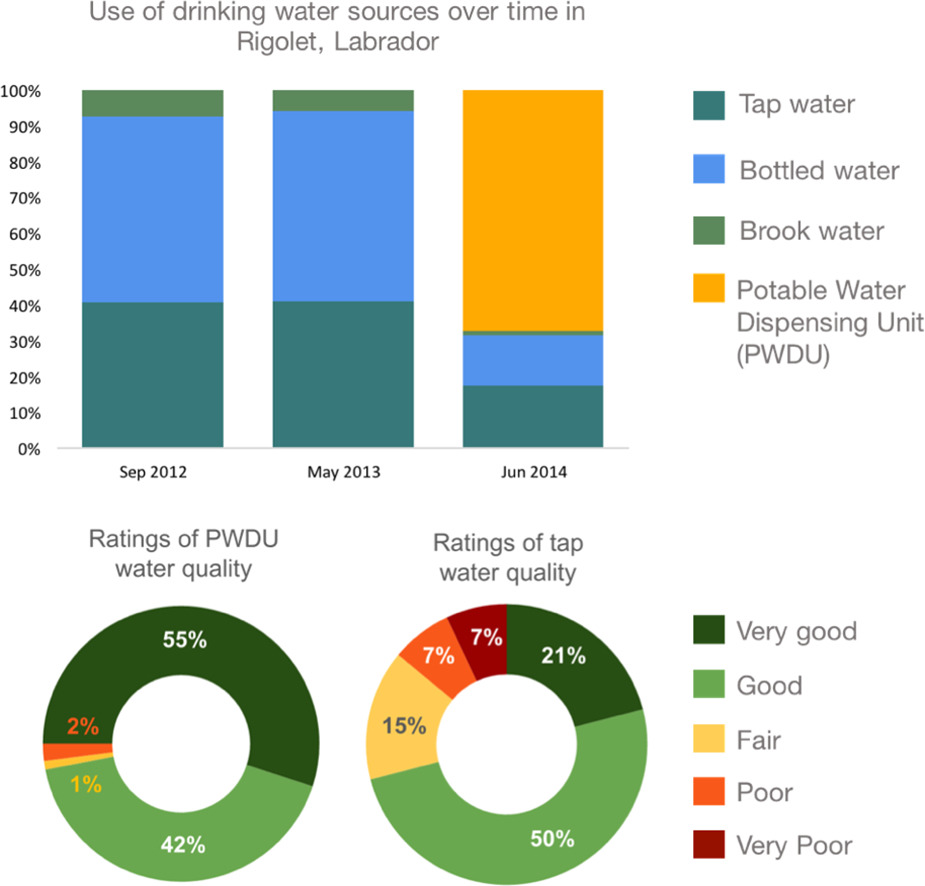How has climate change and health research in North America advanced since the last IPCC Assessment Report (AR5)? Read our new research recently published in Environmental Research to find out!
Congratulations to the entire author team: Sherilee Harper, Ashlee Cunsolo, Amreen Babujee, Shaugn Coggins, Etienne de Jongh, Tianna Rusnak, Carlee Wright, and Mauricio Domínguez Aguilar!
Here is a summary of our main findings.
We used a scoping review approach to systematically identify and examine publication trends. We examined 56,000+ potentially relevant articles, of which 756 articles measured climate and health in North America since IPCC AR5.
Urban heat-related and respiratory research in USA dominates the North American climate-health literature.
Gaps on previously neglected climate-health outcomes are beginning to be filled but are still under-researched, including mental health, nutrition, and foodborne disease.
Most research focused on climate-health impacts – less focused on adaptation & mitigation.
Geographical research inequities exist, including research gaps in Canada and Mexico, and in rural and remote regions.
Importantly, we found a significant decrease in climate-health research in Canada since IPCC AR5, which highlights a concerning trend.
We observed progress in future projections of climate-health risks - but projection research is still under-studied for many climate-sensitive health outcomes in North America, and would benefit from considering social and demographic variables in models.
Based on current climate-health evidence gaps, transdisciplinary and cross-sector research, that includes the social sciences, examining current and future climate-health adaptation, mitigation, and the adaptation-mitigation nexus should become a top priority for research, given the urgent need for this evidence to inform climate change policies, actions, and interventions.
















